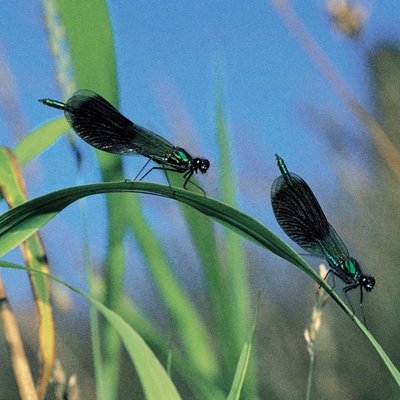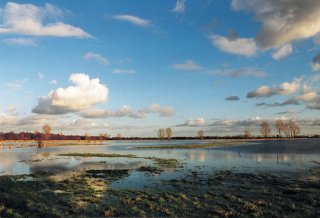River Wümme (Bremen and Lower Saxony)
From its Head Down to the Fens - a model project on the Water Framework Directive
In this joint project, we are involved together with other initiatives from the Bremen region in implementing the Water Framework Directive on a North German river as a model.
Studying River Wümme from its source in the Lüneburger Heide heathlands down to its mouth at the Lower River Weser shows that it is an exciting little river, which flows through and partly forms a variety of landscapes along only 110 kilometres. Its source is on top of a Geest (specific German term describing a wavy landscape above the surrounding marshland, formed by glaciers and often with low soil fertility) in Lower Saxony. The shallow, sandy river then meanders through a number of protected areas towards the west, receiving several smaller rivers and brooks from woodlands and meadows in the vicinity, forming swamps, and flowing by the towns of Lauenbrück, Rotenburg upon Wümme and Ottersberg. Near Bremen, River Wümme hits the low Basin of Bremen, a protected area of specific value for meadow- and waterbirds. Now, the tides of the North Sea influence the river and make it flow ‘upstream’ periodically. During low tides, small mudflat areas appear and during high tides – especially in winters – the surrounding wetlands are frequently flooded. Finally River Wümme merges with River Hamme and flows - named Lesum now - into the River Weser close to Vegesack, in the North of Bremen.

A working group consisting of representatives from NordWestNatur, BUND Bremen and Lower Saxony, Europarc and the Manfred-Hermsen-Stiftung took the first steps to restore parts of the Wümme from its source to its estuary. Our vision is the restoration of an exemplary near-natural Geest river, which is in "good condition" according to the Water Framework Directive. In particularly needy places, individual renaturations are carried out, which have an effect on the overall condition. We do not only consider the Wümme itself, but the entire water catchment area.
As this task will take years and will cost a lot of money, a feasibility study was first carried out to identify particularly needy areas in the water system for pilot measures and to define important project components. These are among others
- Gentle water maintenance
- Renaturation of all types of water structures
- Making the water network more permeable
- Securing and developing flood landscapes
- Public relations / environmental education for the good status of water bodies
Our foundation participates in the model project with a feasibility study, helped to finance the renaturation of the Embs mill ditch, the Wörpe, Fintau and Veerse (all tributaries of the Wümme). On our own or leased areas in the Breitenfelder Moor, we provide moorland and climate protection in the Wümme catchment area. All projects were actively supported by pupils for the purpose of environmental education.






